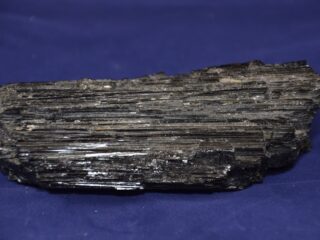
For over four thousand years, a group of enigmatic deities known as the Anunnaki have loomed large in the mythology...
Stay ahead of the curve and educate yourself with our latest blog post. Explore now and elevate your knowledge! ⇢

For over four thousand years, a group of enigmatic deities known as the Anunnaki have loomed large in the mythology...
— ADVERTISEMENT —

The rich tapestry of Navajo mythology and oral tradition paints a vivid picture of the creation and emergence of the world. The Navajo, or Diné as they call themselves, have a profound connection to their creation story, which has been passed down through generations. This story is not merely a myth but a vital part of their cultural identity, worldview, and spiritual beliefs. In this blog post, we will delve deeply into the Navajo creation story, exploring the intricate journey from the First World to the Fourth World, and the profound lessons it imparts. The First World: The Black World...

In your reading of books on spirituality, sex, and healing in the New Age literature department of the bookshop, you’ve definitely come across exotic-sounding terminologies like chakra, prana, aura, and tantra. But what’s the real story behind these strange words? Are All Energy Healings the Same? Pranic healing, an ancient Hindu concept of energy healing, refers to chakras as energy centers. Prana is the Sanskrit word for “vital energy.” Another term associated with pranic healing is aura. The aura is a non-physical body made up of energy that coexists with our physical body. According to popular belief, the aura that...

Black Tourmaline, also known as Schorl, was used by ancient magicians to protect them from earth demons while they cast spells. This stone is still revered today as a premier protection talisman, a psychic shield deflecting and dispelling negative energies, entities, or destructive forces. It protects against radiation and pollutants in the environment, and it is extremely useful in purifying and neutralizing one’s own negative thoughts and internal conflicts, transforming them into positive, usable energy. Black Tourmaline is also a strong grounding stone with an electrical energy that connects the Earth and the human spirit. Its calming energy aligns the...

The Random House Unabridged Dictionary defines numerology as the study of numbers, such as the numbers that make up a person’s birth year, to figure out how they might affect a person’s life, future, etc. In the American Heritage Dictionary, numerology is described as the study of the esoteric meanings of numbers and their purported influence on human life. Based on these points, we can say that numerology is the study of numbers and how they might affect our lives. It has been used for ages, but recently it has become more popular because of the fast-paced modern lifestyle and...

In Ireland, Halloween is believed to have originated from the ancient Celtic festival of Samhain, where people would light bonfires and wear costumes to ward off ghosts. Today, children in Ireland still go trick-or-treating, and many families attend fireworks displays or bonfire parties. The traditional Irish Halloween food is barmbrack, a fruitcake that contains hidden charms or rings that predict the eater’s future. Was Halloween originally a pagan or a Christian holiday? Halloween was initially a pagan feast rather than a Christian holiday, similar to Christmas Day. The Roman Catholic Church just established this holy day in the 10th century....
— ADVERTISEMENT —